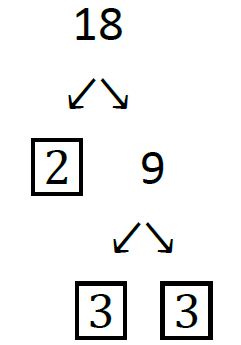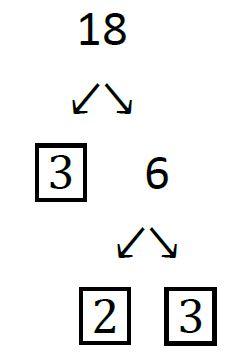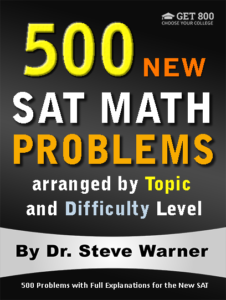
500 New SAT Math Problems
Just 19.99 on Amazon
Hi everyone! The latest edition of 500 New SAT Math Problems is now available in paperback from Amazon. This edition just has been modified from the previous edition to account for the changes on the Digital SAT.
The paperback is now on sale on Amazon for only $19.99. Note that once the sale ends (by the end of today), the price of this book will go up to $42.99.
The promotion has ended. Thanks to everyone who participated. The book is now available at its regular price here: 500 New SAT Math Problems
If you have any questions, feel free to contact me at steve@SATPrepGet800.com
Thank you all for your continued support!
A Trick For Free Two Day Shipping
I would like to finish this post with a little trick you can use to get free 2 day shipping on any of the books you decide to purchase without making any additional purchases. If you have never used Amazon Prime you can sign up for a free month using the following link.
Sign Up For Amazon Prime For Free
If you have already had a free trial of Amazon Prime you can simply open up a new Amazon account to get a new free trial. It just takes a few minutes! You will need to use a different email address than the one you usually use.
This next part is very important! After you finish your transaction, go to your Account, select “Manage my prime membership,” and turn off the recurring billing. This way in a month’s time Amazon will not start charging you for the service.
After shutting off the recurring billing you will still continue to receive the benefit of free 2 day shipping for one month. This means that as long as you use this new Amazon account for your purchases you can do all of your shopping on Amazon for the next month without having to worry about placing minimum orders to get free shipping.
Just be aware that certain products from outside sellers do not always qualify for free shipping, so please always check over your bill carefully before you check out.
Well I hope you decide to take advantage of this very special offer, or at the very least I hope you will benefit from my Amazon “free 2 day shipping trick.” Here is the link one more time:
Sign Up For Amazon Prime For Free
If you think your friends might be interested in this special offer, please share it with them on Facebook:
Thank you all for your continued support!
Arithmetic Sequences
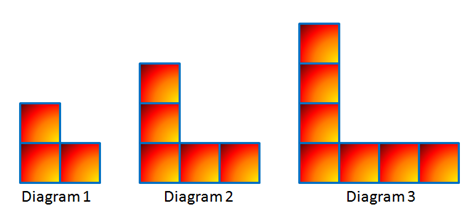
Hello everyone. Today I would like to talk about arithmetic sequences. Questions involving arithmetic sequences appear on the ACT, GRE and SAT math subject tests. Here is an example of an arithmetic sequence.
Example 1
1, 4, 7, 10, 13, 16,…
Note that the first term of this sequence is 1, the second term of this sequence is 4, and so on.
So what makes this sequence arithmetic?
Well notice that to get from 1 to 4 we need to add 3. To get from 4 to 7 we also add 3. To get from 7 to 10 we also add 3. In other words, the sequence is arithmetic because we always add the same number to get from any term to the next term. This special number is called the common difference of the arithmetic sequence.
So why is this number called the common difference? Well another way to compute the common difference is to note that when we subtract any term from the next term we always get the same number, in this case that number is d = 3.
In other words we have 4 – 1 = 3, 7 – 4 = 3, and so on.
An arithmetic sequence is a sequence of numbers such that the difference between consecutive terms is constant. The number d is called the common difference of the arithmetic sequence.
Let’s try a simple example.
Example 2
The second term of an arithmetic sequence is 15 and the third term is 10. What is the first term?
A. –15
B. –10
C. 1/15
D. 10
E. 20
Solution: Moving backwards, to get from the third term to the second term we add 5. Therefore we add 5 more to get to the first term. So the first term is
15 + 5 = 20.
This is choice E.
Note that in an arithmetic sequence, you always add (or subtract) the same number to get from one term to the next. This can be done by moving forwards or backwards through the sequence.
Note also that the common difference of this sequence is d = 10 – 15 = –5.
Many students might mistakenly say that the common difference is 5.
This particular problem was pretty simple, so we were able to solve it just by “counting.” In other words we didn’t really have to worry about the formalities of whether the common difference was positive or negative. But in harder questions we might need to be more careful.
Alternate solution: Note that the terms of the sequence are getting smaller so that the first term must be larger than 15. So the answer must be choice E.
In my next post we will learn a special technique that makes many seemingly difficult problems involving arithmetic sequences very easy to solve. Check it out here: Arithmetic Sequences and Linear Equations
More Practice with Arithmetic Sequences
If you are preparing for a standardized test, you may want to take a look at the Get 800 collection of test prep books. Click on the picture below for more information.
Greatest Common Divisor (GCD)
and Least Common Multiple (LCM)
Hi everyone. How are we doing today?
Today I would like to help you solve math problems that involve finding the greatest common divisor and least common multiple of a set of positive integers. This can be extremely useful for standardized tests like the ACT and GRE. But before I even get to today’s post, I would like to go back to yesterday’s post on Prime Factorizations where I asked you to draw a factor tree for the number 6137. You can find that post here: Integers, Prime Numbers, and Prime Factorizations
Solution to Last Week’s Question
Let’s compare our drawings.
As I mentioned last week, it’s not artistic merit I am looking for, but rather that the numbers in your ‘tree’ are correct.
Let’s start by taking the square root of 6137. Punching that into your calculator, we see that we get about 78.3. So using the tip that I gave to you last week, we will divide 6137 by the prime numbers less than 78.3.
The primes less than 78.3 are 2, 3, 5, 7, 11, 13, 17, 19, 23, 29, 31, 37, 41, 43, 47, 53, 59, 61, 67, 71 and 73.
The good news is that we do not need to divide by all of these numbers to ind our factors – let me explain: Dividing by 2, 3, 5, 7, 11, and 13 do not produce integers, but 6137/17 = 361.
Now, the square root of 361 is exactly 19 (this is easily checked in your calculator). So 361 = (19)(19) = 19².
So 6137 = 17 · 19².
Here is my factor tree:
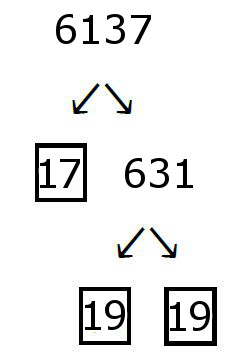
How does your tree look compared to mine? Get in touch if you have any questions regarding this…
GCD and LCM
Now for the main part of the post…
The greatest common divisor (gcd) of a set of positive integers is the largest positive integer that each integer in the set is divisible by.
The least common multiple (lcm) of a set of positive integers is the smallest positive integer that is divisible by each integer in the set.
Example 1
Let’s find the gcd and lcm of 9 and 15.
There are a few ways we can do this.
First method: The factors of 9 are 1, 3 and 9. The factors of 15 are 1, 3, 5 and 15. So the common factors of 9 and 15 are 1 and 3. Therefore we see that gcd (9,15) = 3.
The multiples of 9 are 9, 18, 27, 36, 45, 54, 63,… and the multiples of 15 are 15, 30, 45,.. We can stop at 45 because 45 is also a multiple of 9. Therefore we see that lcm (9,15) = 45.
Second method: We first find the prime factorizations of 9 and 15. We see that 9 = 3² and 15 = 3 · 5. To find the gcd we multiply together the smallest powers of each prime from both factorizations, and for the lcm we multiply the highest powers of each prime. So we have gcd (9,15) = 3 and we have lcm (9,15) = 3² · 5 = 45.
Now take note – If you have trouble seeing where the gcd and lcm are coming from here, it may be helpful to insert the “missing” primes. In this case, 5 is missing from the factorization of 9. So it might help you if you write 9 = 3² · 5º. Now we can think of the gcd as 3¹ · 5º = 3.
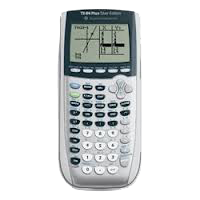
Third method: Your calculator can actually do this for you (not on the GRE though)! On your TI-84 calculator press MATH, scroll right to NUM. For the gcd press 9, type 9,15 and press ENTER. You will see an output of 3. For the lcm press 8, type 9,15 and press ENTER for an output of 45.
Example 2
Let’s try another example: Find the gcd and lcm of 100 and 270.
The prime factorizations of 100 and 270 are 100 = 22 · 52 and 270 = 2 · 33 · 5. So gcd (100,270) = 2 · 5 = 10 and lcm (100,270) = 22 · 33 · 52 = 2700.
If we were to insert the ‘missing’ primes in the prime factorization of 100 we would get 100 = 22 · 30 · 52. So we can think of the gcd as 21 · 30 · 51 = 10.
Example 3
Okay, now let’s try an ACT math question…
What is the least positive integer divisible by the integers 3, 7 and 14?
A. 168
B. 126
C. 84
D. 42
E. 28
Calculator method: The question is actually asking for the least common multiple of 3, 7 and 14. Your calculator can only do two at a time. So first compute lcm (3,7) = 21, and then compute lcm (21,14) = 42, choice D.
Simple!
Solution by Starting with choice E: Begin by looking at choice E since it is the smallest. 28/3 comes to approximately 9.33 in our calculator. Since this is not an integer, 28 is not divisible by 3. We can therefore eliminate choice E. We next try choice D.
42/3 = 14, 42/7 = 6, 42/14 = 3
Since these are all integers, the answer is choice D.
For more information on this strategy see the following blog post: Starting With Choice C – A Basic SAT Math Strategy.
Example 4
Now here is a much more difficult example for us to try together:
The integer k is equal to m² for some integer m. If k is divisible by 6 and 40, what is the smallest possible positive value of k?
Did you realize that we are looking for the smallest perfect square that is divisible by the least common multiple of 6 and 40? Let’s find some prime factorizations: 6 = 2 · 3, and 40 = 2³ ·5. So lcm (6,40) = 2³ · 3 · 5. The least perfect square divisible by this number is 24 · 3² · 5² = 3600.
It’s not too hard when you know how to compute the lcm.
This was quite a long blog post, but I hope you have received some good value from it.
Click on the picture below for more information about the Get 800 collection of test prep books.
Integers, Prime Numbers And Prime Factorizations
I would like to begin today with a few simple definitions of terms that appear in number theory problems on the ACT , GRE and SAT math subject tests.
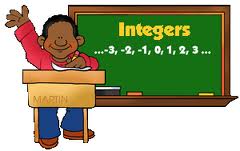
Definitions
The integers are the counting numbers together with their negatives.
…,-4, -3, -2, -1, 0, 1, 2, 3, 4,…
The positive integers consist of the positive numbers from the above list.
1, 2, 3, 4,…
Next we have prime numbers.
A prime number is a positive integer that has exactly two factors (1 and itself). Here is a list of the first few primes:
2, 3, 5, 7, 11, 13, 17, 19, 23,…
Note that 1 is not prime. It has only one factor.
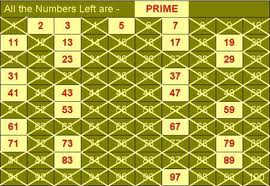
A little trick:
Here is a quick trick for determining if a large number is prime: take the square root of the integer and check if the integer is divisible by each prime up to this square root. If not, the number is prime.
For example let’s try to figure out if 3001 is a prime number. Note that when we take the square root of 3001 in our calculator we get approximately 54.8. Now with our calculators we divide 3001 by 2, 3, 5, 7, 11, 13, 17, 19, 23, 29, 31, 37, 41, 43, 47, and 53 (all the prime numbers below 54.8). Since none of these are integers, 3001 is prime.
The Fundamental Theorem of Arithmetic
The fundamental theorem of arithmetic says “every integer greater than 1 can be written “uniquely” as a product of primes.”
The word “uniquely” is written in quotes because prime factorizations are only unique if we agree to write the primes in increasing order.
For example, 6 can be written as 2 · 3 or as 3 · 2. But these two factorizations are the same except that we changed the order of the factors. To make things as simple as possible we always agree to use the canonical representation. The word “canonical” is just a fancy name for “natural,” and the most natural way to write a prime factorization is in increasing order of primes. So the canonical representation of 6 is 2 · 3. As another example, the canonical representation of 18 is 2 · 3 · 3. We can tidy this up a bit by rewriting 3 · 3 as 32. So the canonical representation of 18 is 2 · 32. If you are new to factoring, you may find it helpful to draw a factor tree. For example here is a factor tree for 18:
To draw this tree we started by writing 18 as the product 2 · 9. We put a box around 2 because 2 is prime, and does not need to be factored anymore. We then proceeded to factor 9 as 3 · 3. We put a box around each 3 because 3 is prime. We now see that we are done, and the prime factorization can be found by multiplying all of the boxed numbers together. Remember that we will usually want the canonical representation, so write the final product in increasing order of primes.
By the Fundamental Theorem of Arithmetic above it does not matter how we factor the number – we will always get the same canonical form. For example, here is a different factor tree for 18:
For practice, why don’t you try to draw a factor tree for 6137? Note that this is much more challenging than any number you will have to factor on a standardized test. I’ll have the solution for you tomorrow, so we can compare notes then. Remember, I am not looking for artistic merit – just make your factors clear in your drawing.
How many prime numbers are there?
This is going off on a bit of a tangent, but there are an infinite number of prime numbers. This was first proved by the ancient Greek mathematician Euclid.
Interestingly, the largest prime number found so far is 257,885,161 – 1. That’s a number with 17 million digits! I dare you to find the next one greater than that.
In the meantime, if you want to learn mathematical strategies to efficiently answer math questions on standardized tests, I would suggest that you take a look at the Get 800 collection of test prep books. Click on the picture below for more information about these books.

Turn Wrong Answers Into Right Answers
On Standardized Tests
Today I want to discuss a common mistake that students make which leads to bad preparation. The type of mistake I am about describe is especially common during preparation for standardized tests such as the ACT, SAT and GRE.
Although many problems on standardized tests can be very difficult to solve, it is usually not very hard to understand the solutions. After getting a problem wrong, a good student will go over the solution until they understand it completely. Very often, however, the same student will misinterpret understanding the solution as being able to reproduce the solution on their own.
If after a student gets a question wrong I explain the correct way to do it and they understand my explanation, then more than likely if I ask them to solve the question 5 minutes later they will be able to do so. But it is important to realize that this does not mean that they will be able to solve a similar question (or even the exact same question) two months later during their SAT.
Understanding a solution and being able to reproduce it using short term memory does not necessarily lead to long term retention.
So what is the answer? How does a student make sure that they do not make the same mistake on their actual exam that they had made during their preparation?
The answer is quite simple.
During preparation, anytime you get a question wrong mark it off. You should have a special mark that is easy to see and recognize. Students of mine use stars, spirals or even sad faces.

Yes, the marks above were created in MS Paint! But I’m sure, you get the idea…
It is very important to mark off every single question you have gotten wrong regardless of the reason. Even if the only reason you got it wrong was because you accidentally hit a wrong button in your calculator, or even if you got it wrong because you just misread one of the numbers in the problem – mark it off anyway! It is very easy to say “oh that was just a silly mistake – I know how to do this,” and then to never look at that problem again. This is a huge mistake. Let me repeat this one more time. Mark off EVERY question you get wrong. Every question! Not just the ones you do not understand. EVERY SINGLE ONE!
You must reattempt each question you get wrong at least four days later. Do not reattempt the problem the next day, or the day after that. If you wait only one or two days you may be getting the problem correct for the wrong reason. The question is too fresh in your mind. You need time to forget how you solved it. This way you can be sure that you understand how to solve the problem, as opposed to simply recalling the solution.
If you get the problem correct you can “unmark” it and remove it from the list of problems you need to redo. If you get it wrong again, then leave it marked off and reattempt it again at least four days later. You need to keep reattempting each problem you get wrong with at least four days between attempts. You should only stop reattempting a problem once you get it completely correct on your own without recalling exactly how the problem was solved. Only then can you know for certain that you have internalized the technique necessary to solve that problem.
If you follow the advice I have given here, then every time you get a problem right that you had previously gotten wrong, you will be one step closer to a perfect score on the SAT, ACT, GRE, or whichever exam you are preparing for.
I want you to treat this message in the same way as I recommend you treat a question you answer incorrectly. Come back to this article in four days time. Reread it. Internalize it. I am certain you will benefit from the information given here if you make it a part of your long term memory..
And if if you would like lots of practice problems I suggest you take a look at the Get 800 collection of test prep books. Click on the image below for more information about these books.

How Many Questions Should You Be Attempting
In Each SAT Math Section?
Students often ask me if there is any way they will ever be able to get through all of the SAT math questions in the given amount of time. In response, I always explain they are asking the wrong question. For most students, worrying about getting to the end of the test will not improve your score. Of course, if you are shooting for an 800, it goes without saying that you need to attempt and correctly solve every problem on SAT day (although there are rare instances, once every few years, in which there is an SAT where you can miss one math problem and still score an 800).
For most students, the problem is that they are already attempting too many questions. This advice might sound strange at first because students have been conditioned not to leave questions blank on tests. But the fact is, on a standardized test, students will usually increase their score by reducing the number of questions that they attempt.
First, let’s have a quick overview of the math section on the SAT: There are two math sections on the SAT – one where a calculator is allowed and one where a calculator is not allowed. The calculator section has 30 multiple choice (mc) questions and 8 free response (grid in) questions. The non-calculator section has 15 multiple choice (mc) questions and 5 free response (grid in) questions.
You should first make sure that you know what you got on your last SAT practice test, actual SAT, or actual PSAT (whichever you took last). What follows is a general goal you should go for when taking the exam.
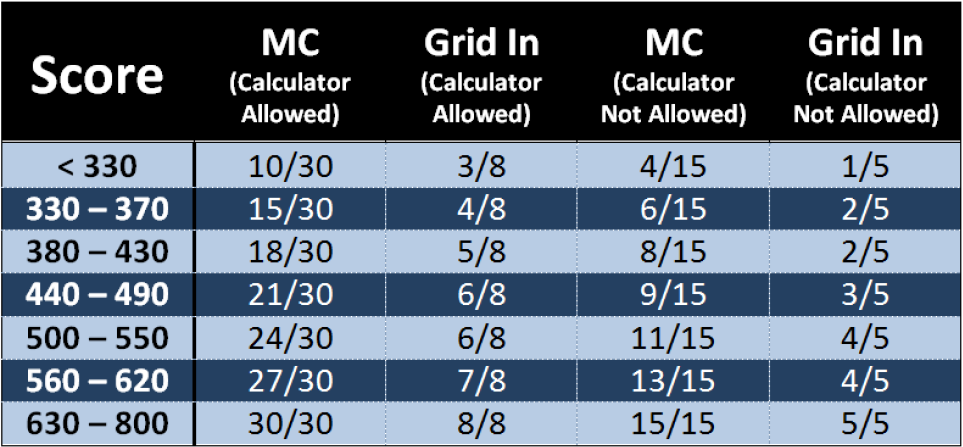
For example, a student with a current score of 450 should attempt the first 21 multiple choice questions and 6 grid ins from the section where a calculator is allowed, and the first 9 multiple choice questions and 3 grid ins from the section where a calculator is not allowed.
This is just a general guideline. Of course it can be fine tuned. As a simple example, if you are particularly strong at algebra problems, but very weak at geometry problems, then you may want to try every algebra problem no matter where it appears, and you may want to reduce the number of geometry problems you attempt.
Important note: There is no guessing penalty on the SAT. You should therefore fill in an answer for every question, even those questions that you do not attempt to solve. Simply take guesses for those last questions before time is up.
If you are currently preparing for the SAT, you may want to take a look at the 28 SAT Math Lessons series.
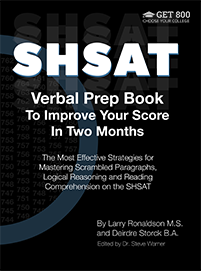 SHSAT Verbal Prep Book – Just $4.54 on Amazon
SHSAT Verbal Prep Book – Just $4.54 on Amazon

Today I would like to announce the release of SHSAT Verbal Prep Book to Improve Your Score in Two Months.
The paperback is now on sale on Amazon for only $4.54. This sale may run for just a few hours (until 12 PM), and once the sale ends the price will go up to $34.99. If you want to take advantage of the sale price I strongly recommend you purchase the book right away.
Click the following link to get to the book’s Amazon page: SHSAT Verbal Prep Book
As an additional incentive to purchase this book today, I will also give you another book for FREE as a downloadable PDF file. You can choose ANY of my other books. So if you would like a different book, go ahead and purchase this one (as soon as it is available), forward me your Amazon confirmation email and let me know which of my books you would like for free. You will be provided with a link to download your additional free book. This offer is available until the end of today (May 23, 2016).
Take a look at my product page to see all of my books: Get 800 Product Page
A Trick For Free Two Day Shipping
I would like to finish this post with a little trick you can use to get free 2 day shipping on any of the books you decide to purchase without making any additional purchases. If you have never used Amazon Prime you can sign up for a free month using the following link.
Sign Up For Amazon Prime For Free
If you have already had a free trial of Amazon Prime you can simply open up a new Amazon account to get a new free trial. It just takes a few minutes! You will need to use a different email address than the one you usually use.
This next part is very important! After you finish your transaction, go to your Account, select “Manage my prime membership,” and turn off the recurring billing. This way in a month’s time Amazon will not start charging you for the service.
After shutting off the recurring billing you will still continue to receive the benefit of free 2 day shipping for one month. This means that as long as you use this new Amazon account for your purchases you can do all of your shopping on Amazon for the next month without having to worry about placing minimum orders to get free shipping.
Just be aware that certain products from outside sellers do not always qualify for free shipping, so please always check over your bill carefully before you check out.
Well I hope you decide to take advantage of this very special offer, or at the very least I hope you will benefit from my Amazon “free 2 day shipping trick.” Here is the link one more time:
Sign Up For Amazon Prime For Free
Thank you all for your continued support!
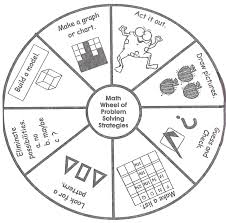 When to Use the Most Common Math Strategies
When to Use the Most Common Math Strategies

There are three very basic math strategies for standardized tests that every high school student should know: Plugging In Answer Choices, Taking Guesses, and Picking Numbers. Take a look at these links before you continue with this message, as the information below will make more sense after a quick review of these strategies.
Sometimes students get confused about when to use which of these strategies. Although there are no definite rules I can give you that will work 100 percent of the time, today I will provide you with some general guidelines.

Plugging In
Let’s begin with the strategy of plugging in answer choices:
This strategy can only be used for multiple choice questions. You simply plug each answer choice into the question until you find the one works. It is always best to start with choice C as your first attempt, unless there is a specific reason not to (on the new SAT you can start with choice B or C, as there are now just four choices). An example of such a reason would be that the word “least” appears in the problem. In this case start with the smallest answer choice (which will usually be choice A or E). Similarly, if the word greatest appears in the problem, start with the largest answer choice.
Plugging in can be used on problems from every topic and difficulty level. It’s often a great way to avoid having to perform messy algebra.
This strategy is most useful when the last part of the question says “What is_____” where the blank contains a single quantity.
Here are some examples:
(1) What is the value of x?
(2) What is the length of the original rectangle?
(3) What is the second number in the list?
(4) Which of the following is a perfect cube?
(5) What is the least such value of x?
For the first four of these examples you would start with choice C. For the fifth example you should start with the smallest answer choice.
This strategy is generally NOT useful when you are asked to find a more complicated expression. For example, do not try to plug in answer choices if the question ends with
“What is the value of x + y?”
In this case you will probably want to use the strategy of “Taking a guess,” or possibly “Picking numbers.”
During your SAT math practice sessions, you should try to apply this strategy on every multiple choice question. The more you attempt to use it, the easier it will be to detect when it can be applied.
Here is a straightforward example of a Level 1 Number Theory problem where “starting with choice C” is a useful strategy.
Three consecutive integers are listed in increasing order. If their sum is 138, what is the second integer in the list?
A. 45
B. 46
C. 47
D. 48
E. 49
I suggest you try to solve this problem in 3 ways:
- by starting with choice C
- algebraically
- using the fact that in a list of consecutive integers, the arithmetic mean is equal to the median.
And here is a Level 4 Geometry problem where this strategy is effective:
The sum of the areas of two squares is 85. If the sides of both squares have integer lengths, what is the least possible value for the length of a side of the smaller square?
A. 1
B. 2
C. 6
D. 7
E. 9
You should solve this problem by starting with choice A.
There are more examples in my original blog post titled Plugging in Answer Choices.

Taking Guesses
Next let’s talk about the strategy of taking a guess:
This strategy is similar to plugging in, except with this one you are not using the answer choices. The reason you are not using the answer choices is either because it is a grid in problem (so there are no answer choices), or the question is asking for a more complicated expression such as “the value of x + y,” or “the perimeter of a geometric figure.” In the first case you may want to take a guess for x or y, and in the second case you may want to take a guess for the width of a side of the figure. For examples of applying this strategy see my original blog post titled Taking A Guess. For a more difficult example, see my blog post titled Taking a Guess – A More Difficult Example.
Picking Numbers
And finally, let’s talk about the strategy of picking numbers:
This strategy is applied by choosing specific values for the unknown quantities in the problem. A new problem is formed that is easier to solve. After solving this easier problem, you must then plug the specific values you have picked into every answer choice, and eliminate any answer choices that do not come out correct. If more than one answer choice has not been eliminated, you can try picking new numbers to eliminate more choices.
Here are some occasions when the strategy of picking numbers will usually work:
- When one or more variables appear in the answer choices.
- When the word “percent” is in the problem (pick 100).
- When there is a variable in the problem, and it is implied that the answer does not depend on the value of the variable.
Here is an Algebra problem where “Picking numbers” can be used.
Which of the following is equal to (x + 66)/22 ?
A. (x+33)/11
B. x+3
C. 3x
D. x/22+3
E. (x+3)/11
Note that you usually want to avoid picking numbers that are too simple. For example, if you choose x = 0, then the answer to the question becomes 3. Now, if you plug a 0 in for x into every answer choice you get the following:
A. 3
B. 3
C. 0
D. 3
E. 3/11
Note that A, B and D are all correct.
See if you can solve this problem by picking a better number. You may also want to try to solve it algebraically.
For examples of applying this strategy see my original blog post on Picking Numbers.
Picking Numbers In Percent Problems
If the word “percent” appears in a problem it’s usually a great idea to choose the number 100. This often works even when there is no variable in the problem.
For examples of picking numbers in percent problems, see my blog post titled Picking Numbers In Percent Problems.
Summary
To summarize, here are some general guidelines for choosing which strategy to use:
- If the answer choices are all numbers, and you are being asked for a simple quantity, try plugging in first.
- If the answer choices are all numbers, and you are being asked for a more complicated quantity, try taking a guess.
- If the answer choices contain variables, try picking a number.
- Any question that mentions percents, pick the number 100.
- In grid in questions with variables, try taking a guess.
There is a lot of information in this blog post with links to many of my other posts, so take your time to read and digest the information. As always, the best way to internalize the concepts above is by practice. For daily practice you may want to check out the Get 800 collection of test prep books. Click on the picture below for more information about these books.
 Picking Numbers In Percent Problems
Picking Numbers In Percent Problems

Yesterday we looked at the basic but important strategy of picking numbers. Click the following link to view that post: Picking Numbers
At the end of that post, I did say that we would be applying this strategy to percent problems.
When picking a number in percent problems, the best choice is usually the number 100. After all, the word percent literally translates to “out of 100.”
Example 1:
Let’s take a look at an SAT problem involving percents:
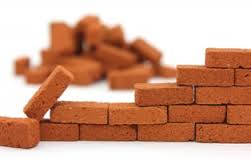 There are b bricks that need to be stacked. After k of them have been stacked, then in terms of b and k, what percent of the bricks have not yet been stacked?
There are b bricks that need to be stacked. After k of them have been stacked, then in terms of b and k, what percent of the bricks have not yet been stacked?

Since this is a percent problem let’s choose 100 for the total number of bricks. So we have b = 100. For k, let’s choose 25, so that 25 bricks have been stacked, and so that means 100 – 25 = 75 have not been stacked. Since we started with 100 as our total, 75% of the bricks have not been stacked. Remember to put a big, dark circle around 75%. We make the substitutions b = 100 and k = 25 into each answer choice.
(A) 100/7500 ~ 0.0133% (~ means “is approximately”)
(B) 7500/100 = 75%
(C) 10,000/25 = 400%
(D) 2500/100 = 25%
We now compare each of these percents to the percent that we put a nice big, dark circle around. Since A, C and D are incorrect we can eliminate them. Therefore the answer is choice B.
As I always like to stress: B is not the correct answer simply because it is equal to 75%. It is correct because all of the other choices are not 75%. You absolutely must check every choice!
Example 2:
Now let’s look at a percent problem without answer choices. Even though there is no variable in the problem to pick a number for, we can still use the number 100 to solve the problem quickly and easily.

If Matt’s weight increased by 30 percent and Lisa’s weight decreased by 20 percent during a certain year, the ratio of Matt’s weight to Lisa’s weight at the end of the year was how many times the ratio at the beginning of the year?
Again, 100 is the magic number – let’s choose 100 pounds for both Matt’s weight and Lisa’s weight at the beginning of the year. Matt’s weight at the end of the year was then 100 + 30 = 130 pounds and Lisa’s weight at the end of the year was 100 – 20 = 80 pounds. We then have that the ratio of Matt’s weight to Lisa’s weight at the beginning of the year was 100/100 = 1, and the ratio of Matt’s weight to Lisa’s weight at the end of the year was 130/80 = 13/8. We can therefore grid in 13/8.
Side note: 13/8 is equal to 1.625 as a decimal. Thus, we can also grid in 1.62 or 1.63. We get 1.62 by truncating the decimal, and 1.63 by rounding the decimal. Truncating is better because less thought is involved. Note that if you grid in 1.6 the answer will be marked wrong.
So remember the magic number ‘100’ whenever you see a problem with the word “percent” in it… but as always, practice makes perfect – so find more of these problems, such as those found in my 28 SAT Math Lessons Series. Click on the picture below for more information about these books.
Speak to you soon!
Picking Numbers
The strategy of “picking numbers” works on a wide range of different math problems on standardized tests (such as the SAT, ACT and GRE) in all topics and difficulty levels. It can often be used to make a difficult problem much easier to understand, and if you are careful in its use, you will usually get the answer without too much trouble. The idea is simple – replace the unknowns in the problem with specific values.
Here are some guidelines when picking numbers.
- Pick a number that is simple but not too simple. In general you might want to avoid picking 0 or 1 (but 2 is usually a good choice).
- Try to avoid picking numbers that appear in the problem.
- When picking two or more numbers try to make them all different.
- Most of the time picking numbers only allows you to eliminate answer choices. So do not just choose the first answer choice that comes out to the correct answer. If multiple answers come out correct you need to pick a new number and start again. But you only have to check the answer choices that have not yet been eliminated.
- If there are fractions in the question a good choice might be the least common denominator (lcd) or a multiple of the lcd.
- In percent problems choose the number 100.
- Do not pick a negative number as a possible answer to a grid-in question. This is a waste of time since you cannot grid a negative number.
- If your first attempt does not eliminate all choices except one, try to choose a number that is of a different “type.” Here are some examples of types:
- A positive integer greater than 1.
- A positive fraction (or decimal) between 0 and 1.
- A negative integer less than -1.
- A negative fraction (or decimal) between -1 and 0.
- If you are picking pairs of numbers try different combinations from (8). For example you can try two positive integers greater than 1, two negative integers less than -1, or one positive and one negative integer, etc.
Remember that these are just guidelines and there may be rare occasions where you might break these rules. For example sometimes it is so quick and easy to plug in 0 and/or 1 that you might do this even though only some of the answer choices get eliminated.
Examples
Okay, so let’s try solving a math practice problem by picking numbers. The following problem could appear on the ACT or GRE.
Level 4 Number Theory
For nonzero numbers a, b, and c, if c is three times b and b is 1/5 of a, what is the ratio of a² to c² ?
A) 9 to 25
B) 25 to 9
C) 5 to 9
D) 5 to 3
E) 3 to 5
Looks scary? This ACT problem is actually pretty easy if you pick numbers.
Let’s choose a value for a, say a = 5. Then b = 1, c = 3, and therefore the ratio of a² to c² is 25 to 9, choice B.
Simple, right? Maybe a bit too simple? You can of course solve this ACT math problem algebraically as well, but an algebraic solution is more likely to lead to careless errors, and in this problem will actually take more time than picking numbers.
Here is one more math problem for more practice:
Level 4 Algebra
If a = 3b and b = c + 4 , what is a/27 in terms of c ?
A) c + 1
B) c
C) 3c+1
D) 3c + 1
E) 3c + 2
Using the same method as above, let’s pick a number for c, say c = 2. It follows that b = 2 + 4 = 6. So using our calculator, a = 36 = 729. We then have a/27 = 729/27 = 27. Put a nice big, dark circle around this number so that you can find it easily later. We now substitute a 2 for c into each answer choice and use our calculator.
A) 2 + 1 = 3
B) 32 = 9
C) 33 = 27
D) 32 + 1 = 9 + 1 = 10
E) 32 + 2 = 9 + 2 = 11
We now compare each of these numbers to the number that we put a nice big, dark circle around. Since (A), (B), (D) and (E) are incorrect we can eliminate them. Therefore the answer is choice C.
Remember by picking a number, we can only eliminate answer choices: C is not the correct answer simply because it is equal to 27. It is correct because all four of the other choices are not 27. You absolutely must check all choices!

You can see how powerful picking numbers can be to solve math problems on standardized tests. Follow the guidelines I have provided above and you should be solving more difficult ACT, SAT and GRE math problems with ease. If you would like to see how to apply the strategy of picking numbers to problems involving percents, click the following link: Picking A Number To Solve Percent Problems
More Math Practice Problems
More information on this extremely useful strategy, as well as many more problems to practice with, can be found in the Get 800 collection of test prep books. Click on the picture below for more information about these books.
Until next time…

Taking A Guess – A More Difficult Example
Yesterday I described a very simple yet effective strategy to solve certain math problems on standardized tests such as the ACT and SAT.
The strategy of “taking a guess” is a very useful way to avoid complicated algebra and ensure that a question is answered correctly. See the post from last week for details if you have not already been exposed to this strategy: Basic SAT Math Strategy – Take A Guess
Example
Let’s take a look at another example of how this strategy can be used effectively. Here is a more difficult problem for you to chew the end of your pencil over:
Let the function f be defined for all values of x by f(x) = x(x + 1). If k is a positive number and f(k + 5) = 72, what is the value of k?
Looks tricky?
Well let’s see how we can solve this tricky problem quickly by “taking a guess.”
Let’s take a guess for k, say k = 2. Then we have f(2 + 5) = f(7) = (7)(8) = 56. This is too small. So let’s guess that k = 3 next. Then f(3 + 5) = f(8) = (8)(9) = 72 which is correct. So the answer is 3.
Algebraic Solution
You can see that by using the method of guessing we have found the answer very quickly. Let’s compare this to solving the problem algebraically. Do not worry if the solution that follows confuses you. You will never have to use this method if you choose not to.
f(k + 5) = (k + 5)(k + 6) = k² + 11k + 30.
Since f(k + 5) = 72, we have k² + 11k + 30 = 72. Subtracting 72 from each side of this equation yields
k² + 11k – 42 = 0
(k – 3)(k + 14) = 0
So k = 3 or k = -14. We reject the negative solution because the question says that k is positive. Therefore the answer is 3.
Further Discussion
As you can see, the algebraic solution involves a fairly complicated multiplication which leads to a quadratic equation. The simplest way to solve this quadratic equation is by bringing everything over to one side and factoring. We can see that the answer is obtained correctly, but for most students there is a danger of getting lost in the algebra. This method also takes longer than the method of taking a guess. So for these reasons, why would you want to use algebra to solve a problem such as the example above? Knowing how the algebra works, however, is good for gaining mathematical maturity. This is certainly important if you want to get an 800 in SAT math or a 36 in ACT math. So if you are going for a perfect score, practice the algebraic solution at home. Just do not use it on test day!
More Practice
If you have any questions or comments regarding this strategy, please do let me know. And if you want more practice with this particular strategy, as well as the other important strategies you need to know to improve your standardized test math score, please check out the Get 800 collection of test prep books. Click on the picture below for more information about these books.
Make sure to join the newsletter above to receive more of my strategies, hints and tips as you prepare for your standardized test!


